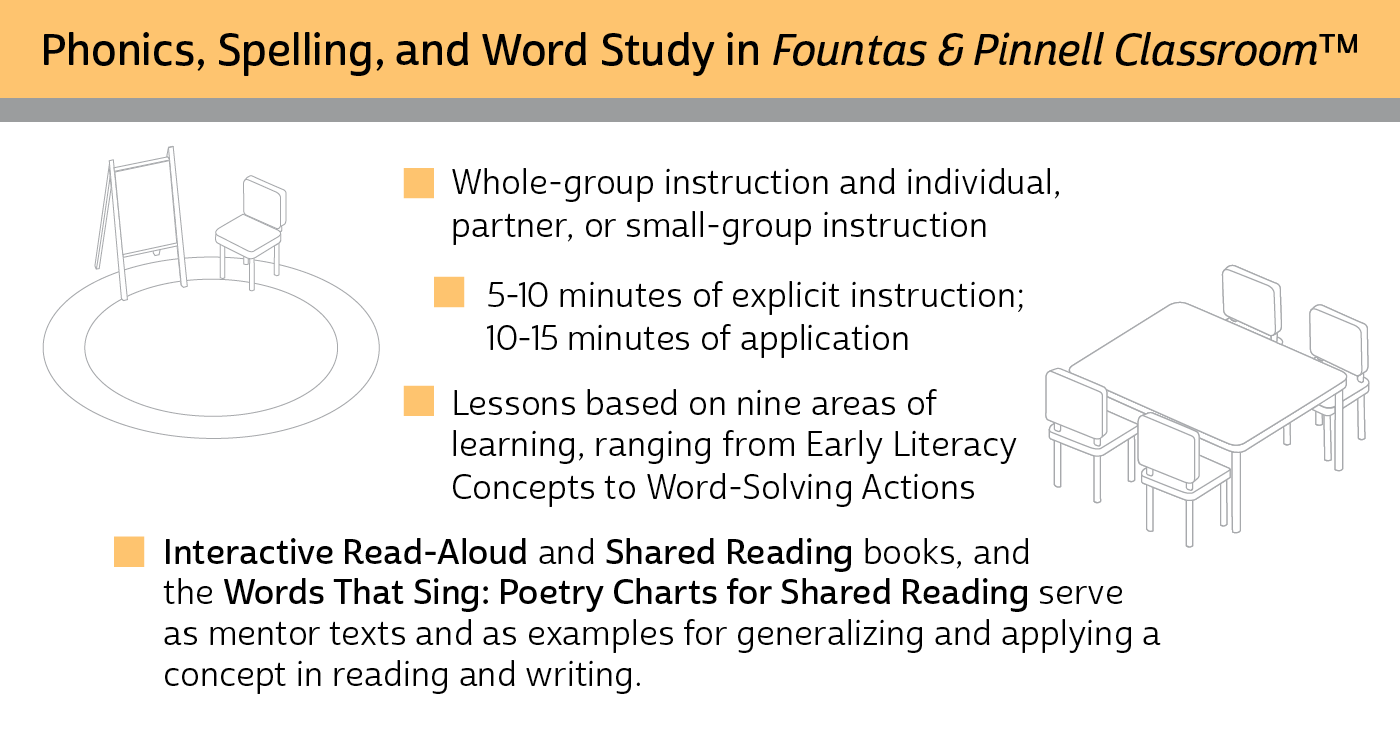*Effective reading instruction involves a combination of powerful instructional settings. This post is the next in our "What is...?" series, where we define each instructional context that makes up a coherent literacy system.
*Effective reading instruction involves a combination of powerful instructional settings. This post is the next in our "What is...?" series, where we define each instructional context that makes up a coherent literacy system.
What is phonics, spelling, and word study?
In an alphabetic language such as English, phonics describes the relationships between the sounds of language and its graphic symbols, i.e., the letters. When students learn these relationships, they are able to "decode" print more efficiently. For example, students see the letter a at the beginning of a word and know that this symbol often stands for the sound /a/, the sound at the beginning of the words and, ask, apple, astronaut, alligator, and many others.

Why is phonics, spelling, and word study important?
The true purpose and promise of phonics instruction is to expand and refine students' reading and writing competencies. With knowledge of letter-sound relationships, students add to their ability to derive meaning from print, to accurately turn sounds into their own print (i.e. spelling), and to solve increasingly longer words. Most students acquire this knowledge and learn how to use it under the guidance of a skilled teacher who provides a wide range of learning opportunities.
What does phonics, spelling, and word study look like?
Phonics, spelling, and word study principles are generally taught to all students in the whole-group meeting area of the classroom. The group share at the end of the lesson also occurs here. The application activity may take place in a word study center, at a small-group table, or at each student's desk or table.
Systematic instruction for phonics, spelling, and word study takes place throughout the day. Teaching, application, and sharing are provided both during a separate, dedicated time for "out-of-text" teaching and during "in-text" instructional contexts, such as interactive read-aloud and guided reading, throughout the school day.
"One goal of our teaching is to help children become active examiners and analyzers of print." – Irene C. Fountas and Gay Su Pinnell
What are the nine areas of learning about phonics, spelling, and word study?
An important task in teaching phonics, spelling, and word study is to present lessons that reflect a systematic, organized approach to becoming an expert word-solver. These areas of learning represent a comprehensive inventory of phonics, spelling, and word study knowledge.
- Early Literacy Concepts – Foundational understandings such as knowing how to read from left to right and voice-to-print matching.
- Phonological Awareness – The ability to recognize individual sounds in words and eventually be able to identify, isolate, and manipulate them.
- Letter Knowledge – Knowing how letters look, how to distinguish them from one another, how to detect them within continuous text, and how to use them in words.
- Letter-Sound Relationships –The sounds of oral language are related in both simple and complex ways to the twenty-six letters of the alphabet. Learning the connections between letters and sounds is basic to understanding print.
- Spelling Patterns – Knowing spelling patterns and word parts helps students notice and use larger parts of words in both solving words (decoding) and writing words (encoding).
- High-Frequency Words – Recognizing high-frequency words quickly and automatically frees attention for understanding as well as for solving other new words.
- Word Meaning/Vocabulary – For comprehension and coherence, students need to know the meaning of words in the texts they read and write.
- Word Structure – Words are built according to rules. Looking at the structure of words will help students learn how words are related to each other and how they can be changed.
- Word-Solving Actions – The strategic moves that readers and writers make when they use "in-the-head" actions while reading and writing continuous text.
In any coherent system of literacy learning, such as Fountas & Pinnell Classroom™, phonics, spelling, and word study are not the end goal. Instead, these important understandings contribute to children's competence and ease in reading and writing continuous texts.
To learn more about the Fountas & Pinnell Phonics, Spelling, and Word Study System, click the link below.
Adapted from The Literacy Quick Guide: A Reference Tool for Responsive Literacy Teaching by Irene C. Fountas and Gay Su Pinnell. Copyright (C) 2018 by Irene C. Fountas and Gay Su Pinnell. Published by Heinemann.
~The Fountas & Pinnell Literacy™ Team
Check out the entire "What is?" blog series:
- What is Guided Reading?
- What is Interactive Read-Aloud?
- What is Shared Reading?
- What are Reading Minilessons?
- What is Independent Reading?
- What are Book Clubs?
- What is Phonics, Spelling, and Word Study?


